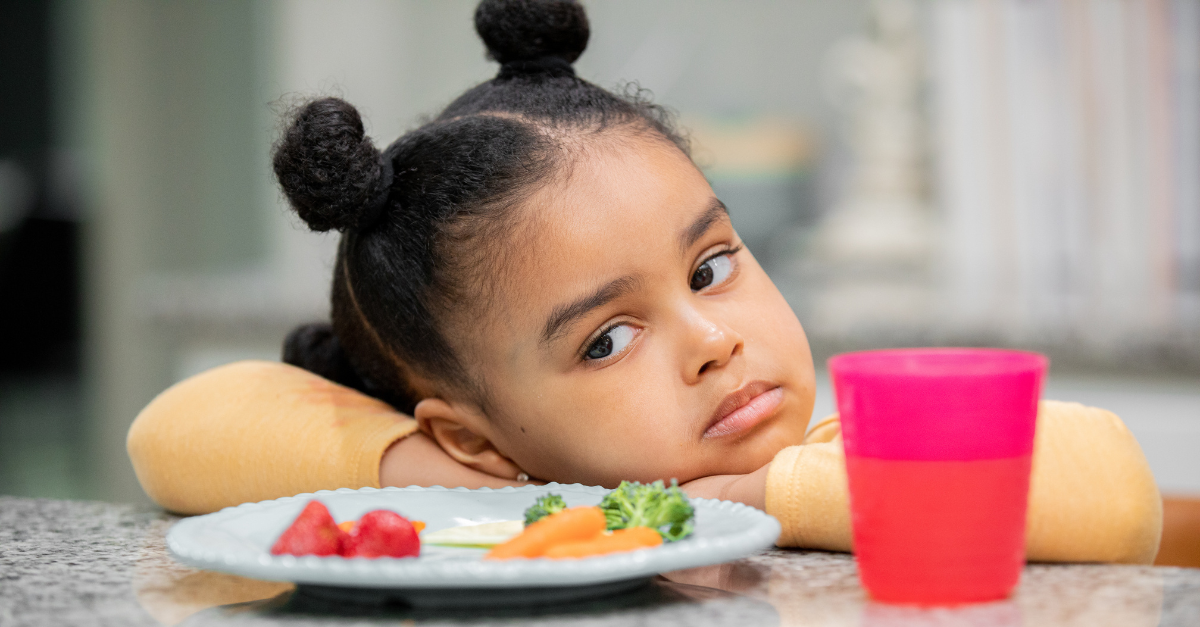
How Parenting Style influences a child’s Eating Habits
It seems like everyone has an opinion on how you should parent your children, particularly with feeding practices. With all of these opinions, it is important to know what scientific research demonstrates as best feeding practices. When it comes to nourishing children and teens, the best practices should emphasize both the quality of nutritional intake and a long-term healthy relationship with food. A natural response to optimizing a child’s nutrition may be to assert more control over food choices and behaviors, but overcontrol can create more feeding issues in the long term. Important considerations for feeding practices to support sustainable, healthy behaviors include parenting style, creation of a healthy eating environment, and appropriate divisions of responsibility between parent and child.
Parenting style generally refers to a parent’s attitude, belief, and behavior that influence a child’s behavior. The general categories of parenting styles include authoritative, authoritarian, and permissive, and the style informs food-related parenting practices.
Authoritative Parenting
Authoritative style is characterized by structured guidance that incorporates a child’s individual desires, thereby promoting autonomy and self-regulation. This is the most desirable feeding approach, as it is associated with healthier eating behaviors and reduced risk of child overweight.
Authoritarian Parenting Style
Authoritarian style is characterized by strict enforcement of parental rules with little acknowledgement of child autonomy. This approach is associated with dislike of foods and disordered eating behaviors.
Permissive Parenting style
Permissive style is characterized by indulgence and little structure provided to a child. This style may result in missed opportunities to role model healthy eating and lower diet quality for a child.
To incorporate a more authoritative feeding style for a child, a parent can encourage eating using supportive and nurturing strategies, involving both structure and responsiveness with praise.

How To Create a Healthy Eating Environment For Children
In addition to considering the general approach a parent can take towards feeding, it is important to promote a healthy eating environment to support children and teens. A healthy eating environment supports a child’s ability to self-regulate food intake using his or her own hunger and satiety cues and encourages nutritious food intake without negative food experiences.
Is the “Clean Your Plate” mentality good?
One way to support an intuitive style of eating that promotes internal rather than external regulation of food intake is to encourage a “happy belly” instead of a “happy plate.” It is best practice to avoid the “clean your plate” mentality as this teaches children to eat a quantity of food based on external and visual factors rather than internal satiety signals, negatively affecting future ability to respond to innate cues based on individual energy needs. In addition to promoting self-regulation, a healthy eating environment supports food exploration in an encouraging yet responsive manner. Bribing, rewarding, forcing, or punishing intake of certain foods have a detrimental effect on healthy eating and should be avoided. Instead, offering choices between foods and encouraging tasting or exposure to new or previously disliked foods is a more effective and gentle strategy that reduces negative food experiences. A parent can also encourage healthy eating through role modeling and sharing fun facts about food and nutrition.
The Roles Of Parents In Guiding A Child’s Eating Habits
To reduce overcontrol in feeding practices, the Satter Division of Responsibility outlines the unique roles of parent and child to promote eating competence. A parent’s role is to provide the what, when, and where of eating and the child’s role is to determine how much and whether to eat what is provided. These roles apply throughout childhood and adolescence, although may differ slightly as a teen begins to develop more autonomy in food choices. The parent’s role is generally to choose and prepare food, provide regular meal and snack times, and create a pleasant eating environment. A parent can trust their child to eat the amount he needs, learn to eat the food the family enjoys, and grow predictability in the way that is right for him.4 Following this framework balances roles between a parent and child and fosters healthy eating habits for both the present and future.
Parental overcontrol of feeding may result in desired outcomes in the short-term, but for the long-term physical and mental health of a child, consider an authoritative style, creating a healthy eating environment, and honoring division of responsibility in feeding. While there is no perfection in feeding or parenting, there is always space for growth and adaptation in feeding tactics.

Lydia Averette
MS, RD, LDN
Lydia is a Licensed and Registered Dietitian Nutritionist who enjoys counseling clients with diverse backgrounds. She obtained her B.S. in Nutrition Sciences at NC State University with a Minor in Sports Science and her M.S.
Sources:
- Lopez NV, Schembre S, Belcher BR, et al. Parenting styles, food-related parenting practices, and children’s healthy eating: A mediation analysis to examine relationships between parenting and child diet. Appetite. 2018;128:205-213. doi:10.1016/j.appet.2018.06.021
- Shloim N, Edelson LR, Martin N, Hetherington MM. Parenting Styles, Feeding Styles, Feeding Practices, and Weight Status in 4-12 Year-Old Children: A Systematic Review of the Literature. Front Psychol. 2015;6:1849. doi:10.3389/fpsyg.2015.01849
- Jess Haines, Emma Haycraft, Leslie Lytle, Sophie Nicklaus, Frans J. Kok, Mohamed Merdji, Mauro Fisberg, Luis A. Moreno, Olivier Goulet, Sheryl O. Hughes. Nurturing Children’s Healthy Eating: Position statement. Appetite.
2019;137:124-133. https://doi.org/10.1016/j.appet.2019.02.007. - The Satter Division of Responsibility in Feeding. Published 2023. Accessed May 30th, 2023. https://www.ellynsatterinstitute.org/how-to-feed/the-division-of-responsibility-in-feeding/
